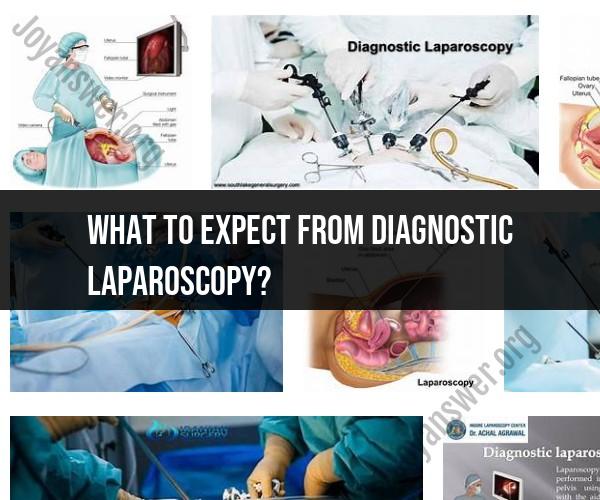What to expect from diagnostic laparoscopy?
Diagnostic laparoscopy is a minimally invasive surgical procedure used by doctors to examine the inside of the abdomen and pelvis. Here's what you can generally expect from a diagnostic laparoscopy:
Pre-Procedure Preparation:
- Your doctor will provide you with specific instructions on how to prepare for the procedure. This may include fasting for a certain period before the surgery.
- You may need to arrange for someone to drive you home after the procedure, as the effects of anesthesia can linger.
Anesthesia:
- You will be given anesthesia to ensure you are comfortable and pain-free during the procedure.
- Depending on the case, you may receive general anesthesia, which will put you to sleep, or local anesthesia with sedation to keep you relaxed but awake.
Small Incisions:
- The surgeon will make small incisions (usually 1-2 centimeters in length) in your abdominal area. These incisions are where the laparoscope and other surgical instruments will be inserted.
Laparoscopy:
- A laparoscope, which is a thin, lighted tube with a camera on the end, will be inserted through one of the incisions. The camera allows the surgeon to view the internal organs on a monitor.
Exploration and Examination:
- The surgeon will use the laparoscope to explore and visually inspect your abdominal and pelvic organs, such as the uterus, ovaries, fallopian tubes, appendix, liver, and gallbladder.
- If necessary, the surgeon may take tissue samples (biopsies) for further examination.
Closure:
- After the examination is complete, the instruments and laparoscope will be removed, and the small incisions will be closed with stitches or adhesive strips.
Recovery:
- You'll be monitored in a recovery area until the effects of anesthesia wear off.
- Most patients can go home the same day or after a short observation period.
- You may experience some mild discomfort or bloating in the hours following the procedure, but this typically subsides quickly.
Post-Procedure Care:
- Follow your doctor's post-operative instructions, which may include restrictions on physical activities, pain management, and dietary recommendations.
- Be alert for any signs of infection, excessive bleeding, or adverse reactions to anesthesia and report them to your healthcare provider.
Results:
- The results of the diagnostic laparoscopy, including any findings or biopsies, will be discussed with you by your healthcare provider during a follow-up appointment.
Remember that individual experiences can vary, and your specific procedure may have unique aspects depending on the reason for the laparoscopy. It's important to discuss any concerns or questions you have with your healthcare provider before the procedure to ensure you are well-informed and prepared.













